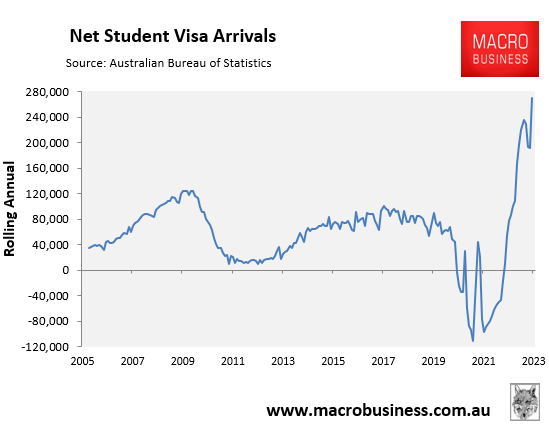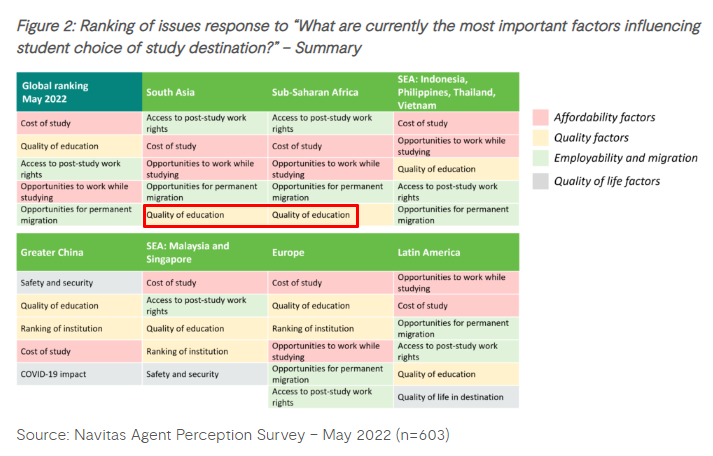Late last year, Labor backbencher Julian Hill warned that Australia’s international education system had become a “ponzi scheme” because it was enticing non-genuine students with easy work rights and permanent residency.
“Uncapped work rights is being misused by agents in many parts of the world who are flogging our precious student visa as some kind of cheap, low rent work visa. No one should permit that to continue”, Hill said.
“We know that the incentive of a permanent visa to Australia is like a golden ticket from Willy Wonka’s chocolate bar”.
“It’s too powerful an incentive that would drive and pervert behaviour by providers, and some students”, Hill concluded.
The Albanese Government lit a fuse under the international education “ponzi Scheme” when it used September’s Jobs & Skills Summit to expand work rights via:
- Uncapping the number of hours international students can work while studying for another year; and
- Extending the length of post-study work visas by two years.
The results were predictable, with net student visa arrivals soaring to unprecedented levels, which has helped drive net overseas migration to all-time highs:

The Albanese Government has since announced that it will reintroduce the work cap on international students from 1 July. However, this cap will be 24 hours a week, up from 20 hours previously in a bid to make Australia more attractive.
Hence, the student visa system will continue to be abused as a defacto low-skilled work visa.
Students from South Asia have dominated the recent arrivals, since they value work rights above everything else when choosing a study destination:

Students from South Asia and Sub-Saharan Africa care about work rights, not quality of education.
Now academics are calling for universities to help these South Asian students find jobs in Australia:
We know South Asian students are extremely keen to work here. Indian graduates were granted the most post-work study visas in the two years leading up to the pandemic. But as of 2022, only 57% of undergraduate Indian students and less than 53% of postgraduates had full-time employment after they graduated…
As of December 2022, about 16% of international students in Australia come from India, with a further 9% coming from Nepal. More than 7% of students also come from a combination of Pakistan, Sri Lanka, Bangladesh, Bhutan, Afghanistan and the Maldives.
We know that many of these students want to study in Australia so as to get a job here and then gain either permanent residency or citizenship. They are often referred to as “two-step” migrants…
Our new study talked to South Asian graduates about the support they got trying to find a job. It found they face two main challenges: both career fairs and careers support on Australian campuses are skewed towards domestic students…
Australian universities need to move away from a “once-size-fits-all” approach when it comes to employability support…
Australia’s economy and university system rely heavily on international graduates to come and study here. They do so on the premise it will help their career prospects, and Australian universities need to do more to live up to this.
Doing so would obviously demote the interests of Australian students, depriving them of crucial job opportunities and experience.
Instead of pandering to international students, our policy makers should be ensuring that local graduates gain employment in their chosen fields. Otherwise, what’s the point of being Australian?
Policy makers should also be targeting a smaller number of high quality (genuine) students by:
- Raising entry standards (particularly English-language proficiency);
- Raising financial requirements needed to enter Australia; and
- Removing the explicit link between studying, work rights and permanent residency.
These reforms would raise student quality, would lift export revenues per student, would improve wages and conditions in the labour market, and would reduce enrolment numbers to sensible and sustainable levels, in turn improving quality and the experience for local students and reducing population pressures.
Sadly, the Albanese Government has taken the opposite path by increasing to work cap by four hours per week, while also extending post-study graduate work visas by two years.
In doing so, Labor has opted for quantity over quality and has ushered a rental and inequality disaster for young Australians.
Soon stubbornly high youth unemployment will again be a common feature of Australia’s labour market.

